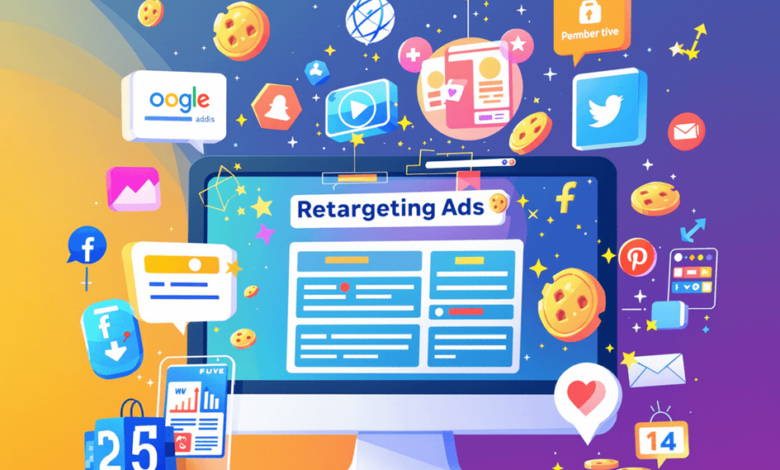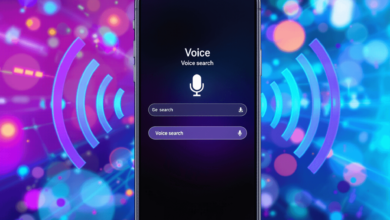Boost Your Conversions: How to Use Retargeting Ads Effectively

Introduction to Retargeting Ads
Imagine this: A potential customer visits your website, looks at your products, but leaves without buying anything. That’s a missed chance, right? Not with retargeting ads.
Retargeting ads are powerful digital marketing tools that help you reconnect with users who’ve previously shown interest in your brand. These strategic advertisements follow your website visitors across different platforms, keeping your products and services fresh in their minds.

The impact of retargeting is remarkable:
- 70% higher conversion rates compared to standard ads
- 3x increase in engagement rates
- 10x improvement in click-through rates
Think of retargeting as your digital sales assistant, gently reminding potential customers about their initial interest in your offerings. By displaying personalized ads based on their previous interactions, you create multiple touchpoints that guide them back to your conversion funnel.
Ready to turn those casual browsers into paying customers? Let’s explore the world of retargeting ads and learn how to use this powerful tool to increase your conversions.
Understanding the Power of Retargeting Ads
Retargeting ads use digital tracking and user identification to work effectively. When someone visits your website, a small piece of code called a tracking pixel or cookie is placed in their browser. This code acts as a digital footprint, allowing your ads to “follow” these users across different websites and platforms.
How Tracking Works
Here’s how the tracking process works:
- A user visits your website and browses specific products
- The tracking pixel captures their behavior and interests
- Your retargeting platform creates custom audience segments
- Targeted ads appear to these users on other websites
The real power of retargeting lies in its ability to deliver personalized advertising experiences. You can show specific product ads to users who viewed those items, display discount offers to abandoned cart customers, or create awareness campaigns for blog readers.
Key Benefits of Retargeting:
- Higher Conversion Rates: Users who see retargeted ads are 70% more likely to convert
- Improved Brand Recall: Regular exposure keeps your brand top-of-mind
- Cost-Effective Advertising: Target only users who have shown interest
- Precise Audience Targeting: Segment users based on their specific interactions
- Dynamic Content Display: Show products or services users have actually viewed
Retargeting platforms also offer advanced features like frequency capping, which prevents ad fatigue by limiting how often users see your ads. You can set custom rules for different audience segments, ensuring each group receives the most relevant messaging at the optimal frequency.
Exploring Different Types of Retargeting Strategies
Retargeting strategies come in three primary forms, each designed to capture different audience segments and behaviors.
1. Site Retargeting
- Targets users who have visited specific pages on your website
- Uses pixel-based tracking to monitor user behavior
- Ideal for e-commerce sites with abandoned cart recovery
- Example: A clothing retailer shows ads featuring previously viewed items to users who browsed their collection
2. Search Retargeting
- Targets users based on their search engine queries
- Works through keyword-based targeting
- Effective for reaching users early in their buying journey
- Example: A software company displays ads to users who searched for “project management tools”
3. Social Media Retargeting
- Reaches users across social platforms like Facebook, Instagram, and LinkedIn
- Leverages platform-specific user data and behaviors
- Creates opportunities for engagement through social proof
- Example: A B2B service provider shows testimonial-based ads to LinkedIn users who visited their pricing page
Each strategy offers unique advantages and potential challenges:
| Strategy Advantages Challenges Site Retargeting | High relevance to user intent, Strong conversion potential | Limited audience reach, Requires significant website traffic |
| Search Retargeting | Broader audience reach, Captures active buyers | Higher cost per click, More competitive landscape |
| Social Media Retargeting | Enhanced targeting options, Rich engagement metrics | Platform-dependent performance, Ad fatigue risk |
These strategies can work independently or combine to create a comprehensive retargeting approach. Your choice depends on your business goals, target audience, and available resources.

Maximizing Conversion Rates with Effective Audience Segmentation
Audience segmentation transforms generic retargeting campaigns into precision-targeted marketing efforts. By analyzing user behavior patterns, you can create distinct audience groups based on specific actions and engagement levels.
Key Segmentation Criteria:
- Time-based engagement: Recent website visitors (last 24 hours), past customers (30-90 days), and seasonal shoppers
- Interaction depth: Product page views, cart abandonment, multiple site visits, and time spent on specific pages
- Purchase history: First-time buyers, repeat customers, high-value clients, and product category preferences
Your segmentation strategy should reflect your business goals. A B2B software company might focus on segments based on downloaded resources and demo requests, while an e-commerce store could prioritize cart abandonment and browsing patterns.
To enhance your audience segmentation efforts, consider leveraging CRM data for targeted advertising. This can provide deeper insights into customer behavior and preferences, allowing for even more precise targeting.
Behavioral Triggers for Segmentation:
- Users who spent 3+ minutes on product pages
- Visitors who viewed pricing information
- Customers who abandoned carts worth $100+
- Readers who engaged with specific blog categories
Create custom audiences for each segment and tailor your ad messaging accordingly. A cart abandoner might respond well to a discount offer, while a blog reader might prefer educational content about your products.
Remember to adjust segment parameters based on performance data. Test different audience combinations and refine your targeting criteria to identify the most responsive user groups.
Choosing the Right Platforms for Your Retargeting Ads
Selecting the perfect retargeting platform can make or break your campaign’s success. Each platform offers unique advantages for different business needs and target audiences.
1. Google Ads Display Network
- Reaches 90% of internet users worldwide
- Ideal for B2C and B2B businesses
- Offers sophisticated targeting options through demographics and interests
- Supports various ad formats including responsive display ads
- Works best for businesses with significant website traffic
2. Facebook Ads Platform
- Provides detailed demographic and behavioral targeting
- Excels in visual-based advertising
- Features dynamic product ads for e-commerce
- Offers cross-platform reach through Instagram
- Particularly effective for B2C companies and lifestyle brands
3. LinkedIn Advertising
- Specialized for B2B marketing
- Targets users based on professional attributes
- Higher cost per click but better quality leads
- Supports sponsored content and message ads
- Perfect for reaching decision-makers and industry professionals
The effectiveness of your retargeting campaign depends on matching your platform choice with your business goals. A B2B software company might find LinkedIn’s professional audience more valuable, while a fashion retailer could see better results through Facebook’s visually-driven platform. Google Ads offers the broadest reach, making it suitable for businesses looking to cast a wide net across various demographics.
Consider testing multiple platforms simultaneously to identify which ones generate the best results for your specific audience and objectives. Track performance metrics closely to optimize your platform selection and budget allocation.

Crafting Compelling Ad Creatives for Successful Retargeting Campaigns
Creating effective ad creatives requires a strategic combination of visually appealing elements and persuasive messaging. To grab attention and encourage conversions, your retargeting ads should include the following key components:
Visual Elements
- High-quality images or videos that align with your brand identity
- Consistent color schemes to maintain brand recognition
- Clean, uncluttered designs that highlight your key message
- Mobile-responsive layouts for cross-device compatibility
Compelling Copy Components
- Clear, benefit-focused headlines that address user pain points
- Personalized messaging based on previous user interactions
- Urgency-creating elements like limited-time offers
- Strong call-to-action phrases that prompt immediate response
Your ad creative strategy should adapt to different user segments. A first-time visitor might respond better to educational content, while abandoned cart users need specific product reminders and incentives to complete their purchase.
Personalization Techniques
- Dynamic product recommendations based on browsing history
- Custom messaging reflecting the user’s stage in the buying journey
- Location-specific offers and promotions
- Behavioral triggers that display relevant content
Test different creative variations to identify what resonates with your audience. A/B testing elements like images, headlines, and CTAs helps optimize your ad performance. Remember to refresh your creative assets regularly to prevent ad fatigue and maintain engagement levels.
Consider implementing dynamic creative optimization (DCO) to automatically adjust your ad elements based on user data and performance metrics. This approach ensures your retargeting campaigns deliver the right message to the right person at the right time.
Measuring the Success of Your Retargeting Efforts
Tracking specific metrics helps you understand the effectiveness of your retargeting campaigns and make data-driven decisions. Here are the essential KPIs to monitor:
Key Performance Indicators (KPIs)
- Click-Through Rate (CTR): Measures the percentage of users who click on your ads
- Return on Ad Spend (ROAS): Calculates revenue generated per dollar spent
- Cost Per Acquisition (CPA): Tracks the expense of acquiring each customer
- Conversion Rate: Shows the percentage of users who complete desired actions
- View-Through Conversions: Records conversions from users who saw but didn’t click ads
Analytics Tools for Campaign Measurement
Google Analytics provides comprehensive insights through:
- Custom audience tracking
- Cross-device conversion monitoring
- Attribution modeling
- Campaign performance comparison
Facebook Ads Manager offers specialized metrics:
- Detailed targeting breakdowns
- Real-time performance data
- A/B testing results
- Audience behavior analysis
Setting Benchmarks
Your retargeting metrics should align with industry standards:
- Average CTR: 0.5-1%
- ROAS: 4:1 ratio
- Conversion Rate: 2-3%
These benchmarks vary by industry and campaign type. Regular monitoring helps identify optimization opportunities and adjust strategies for better performance. Testing different ad variations, audience segments, and bidding strategies reveals which combinations deliver the best results for your specific goals.
Common Pitfalls to Avoid in Your Retargeting Campaigns
Successful retargeting requires careful navigation around several common mistakes that can derail your campaigns. Here are critical pitfalls you need to watch out for:
1. Ad Fatigue and Frequency Issues
- Bombarding users with excessive ads creates annoyance
- Set frequency caps to limit ad exposure to 3-5 times per user daily
- Rotate ad creatives regularly to maintain engagement
2. Poor Mobile Optimization
- Neglecting mobile-first design leads to lost conversions
- Ensure responsive ad layouts across all devices
- Test loading speeds on various mobile networks
3. Targeting Mistakes
- Retargeting converted customers with the same product
- Not excluding existing customers from campaigns
- Using generic messaging for all audience segments
4. Technical Oversights
- Incorrect pixel placement on website pages
- Missing exclusion lists for completed purchases
- Inadequate burn pixels for post-conversion tracking
5. Budget Management Issues
- Allocating too much budget to cold audiences
- Not adjusting bids based on user engagement levels
- Ignoring the cost per acquisition metrics
Fix these issues by implementing regular campaign audits and maintaining a structured testing schedule. Your retargeting efforts need continuous monitoring and adjustment to stay effective and deliver optimal results.
Integrating Retargeting into Your Holistic Marketing Strategy
Retargeting ads work best when they’re part of your overall marketing plan. A successful holistic marketing approach includes:
- Consistent messaging across channels: Make sure your retargeting messages match your email campaigns, social media content, and other marketing interactions
- Using data to improve: Use insights from retargeting campaigns to make your entire marketing strategy better
- Understanding the customer journey: Place retargeting messages strategically at different stages of the buyer’s journey
Your retargeting strategy should grow and change as your business grows. Here are some ongoing optimization practices to consider:
- Test different ad creatives and messaging
- Adjust audience segments based on performance data
- Monitor frequency caps to maintain engagement
- Update your targeting parameters as your audience changes
Remember: retargeting isn’t a standalone solution—it’s a powerful part of your marketing system. By carefully integrating retargeting ads and measuring their impact across all channels, you’ll create a more effective marketing strategy that drives sustainable business growth.
FAQs (Frequently Asked Questions)
What are retargeting ads and how do they work?
Retargeting ads are a digital advertising strategy that allows marketers to reconnect with potential customers who have previously visited their website or interacted with their brand. They work by using cookies and tracking pixels to follow users across the web, displaying targeted ads to remind them of products or services they showed interest in.
What are the benefits of using retargeting ads in digital marketing?
Using retargeting ads effectively can significantly enhance your conversion rates. They allow you to re-engage visitors who did not convert during their initial visit, thereby increasing the chances of completing a sale or desired action.
What types of retargeting strategies can I implement?
There are several types of retargeting strategies, including site retargeting, search retargeting, and social media retargeting. Each type has its pros and cons, and choosing the right one depends on your specific marketing goals and audience.
How can I maximize conversion rates through audience segmentation?
Effective audience segmentation is crucial for successful retargeting campaigns. By analyzing user behavior and segmenting your audience based on interactions with your website or ads, you can tailor your messaging to resonate better with each group, leading to higher engagement and conversions.
Which platforms are best for running retargeting ads?
Popular platforms for running retargeting ads include Google Ads, Facebook Ads, and LinkedIn marketing. Each platform offers unique features that cater to different business needs, making it important to choose one that aligns with your target audience and marketing objectives.
What key performance indicators (KPIs) should I track for my retargeting campaigns?
When measuring the success of your retargeting efforts, focus on KPIs such as click-through rates (CTR) and return on ad spend (ROAS). Tools like Google Analytics and Facebook Ads Manager can help you analyze these metrics to optimize campaign performance.





